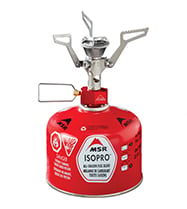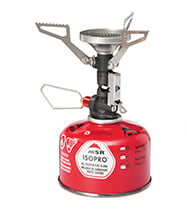Thru-Hiking Stoves: DIY or Buy?
The hole punch sank its teeth into the aluminum side of a cat food can, chewing a hole through the wall. My ventilation system was complete. I’d just created a “cat stove”–a do-it-yourself backpacking stove–while sitting in a dank motel room along the Appalachian Trail. With a little bit of denatured alcohol, I had a new way to cook my food, and it only weighed a few ounces. After hiking for several weeks with a wood-fueled stove, I made the discovery that some environments are incompatible with wood-burning stove systems, and that in a well-trafficked corridor like the Appalachian Trail, it isn’t always ethical to collect wood anyway.
These findings prompted me to observe other backpacking stoves when hikers gathered at the shelter for dinner. Some hopeful thru-hikers lugged around big, bulky stoves. Others made stoves out of soda cans. And then there were the die-hard ultralighters, who either chose not to carry a stove or to carry the cat stove. Whatever choice you make, there’s likely not one best solution for every situation. Here’s a quick look at the options for thru-hiking stoves and some thoughts on the plusses and minuses from my experience on the trail.
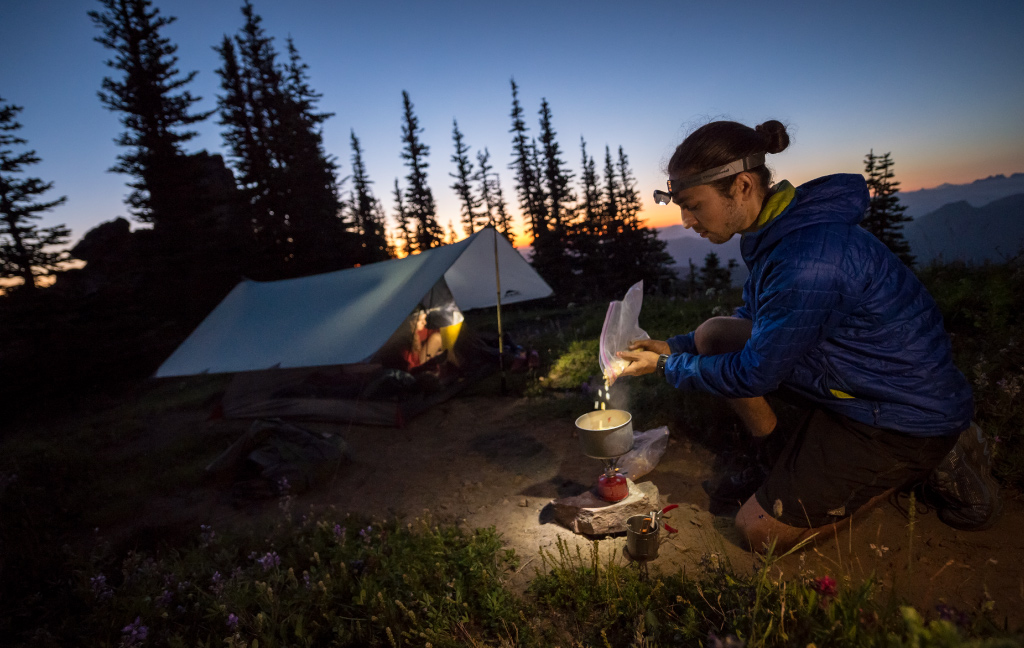
Thru-Hiking Stove Considerations
Thru-hiking gear can be really overwhelming to navigate due to factors like available options, cost, and reliability. Backpacking stoves are no different, coming in dozens of different shapes and sizes. However, bringing a stove on a long-distance backpacking trip is not only a matter of convenience, it’s also a layer of protection since having access to hot water can better equip you to fend off hypothermia, or to clean your water if a filter fails. That’s why actually settling on the “right” one can be such a challenge.
Should you look for a canister stove or liquid fuel? What kind of fuel options are you likely to encounter along your journey? Which is going to be more available? What about denatured alcohol? How much am I willing to carry? Sifting through questions like these can make it seem impossible to find the right stove for a long journey. To focus your efforts, it’s vital to evaluate a few key backpacking stove characteristics like style, fuel accessibility, size, weight, and cost.
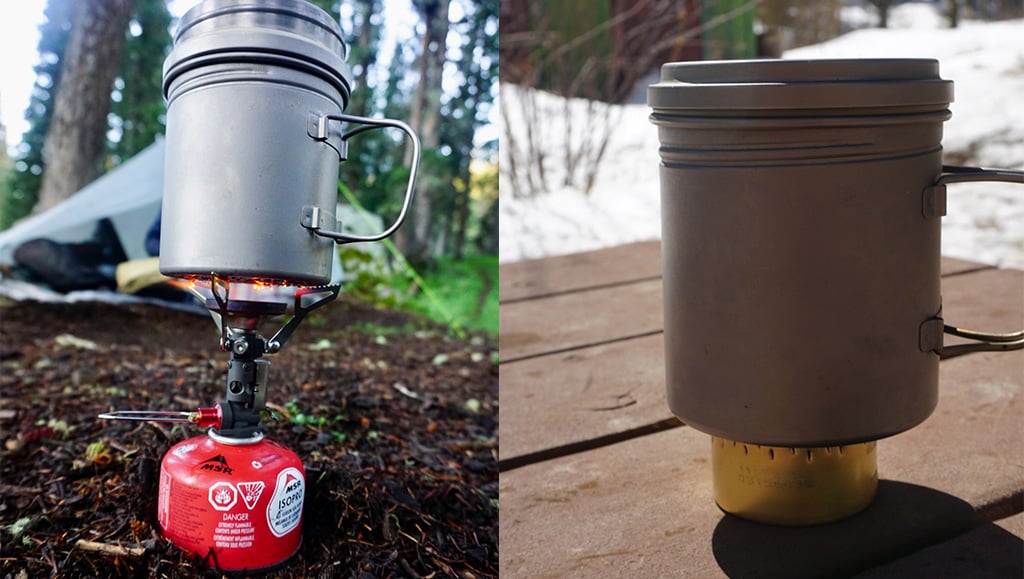
The MSR® PocketRocket® Deluxe vs. The Cat Stove
Throughout the last decade, I’ve used stoves systems like the Reactor™, the tiny PocketRocket Deluxe, the Solo Stove, a DIY cat can stove and more. I’ve found that each stove serves its own purpose. The Reactor, for example, can be suspended from above while cooking, which makes it a great pick for big wall rock climbers. The Solo Stove relies on twigs or solid fuel, which could make it a good pick in an area that has a low fire risk but plenty of dry wood. Ultimately, I found that the cat stove and the PocketRocket Deluxe were among my favorite stove picks for a variety of reasons.
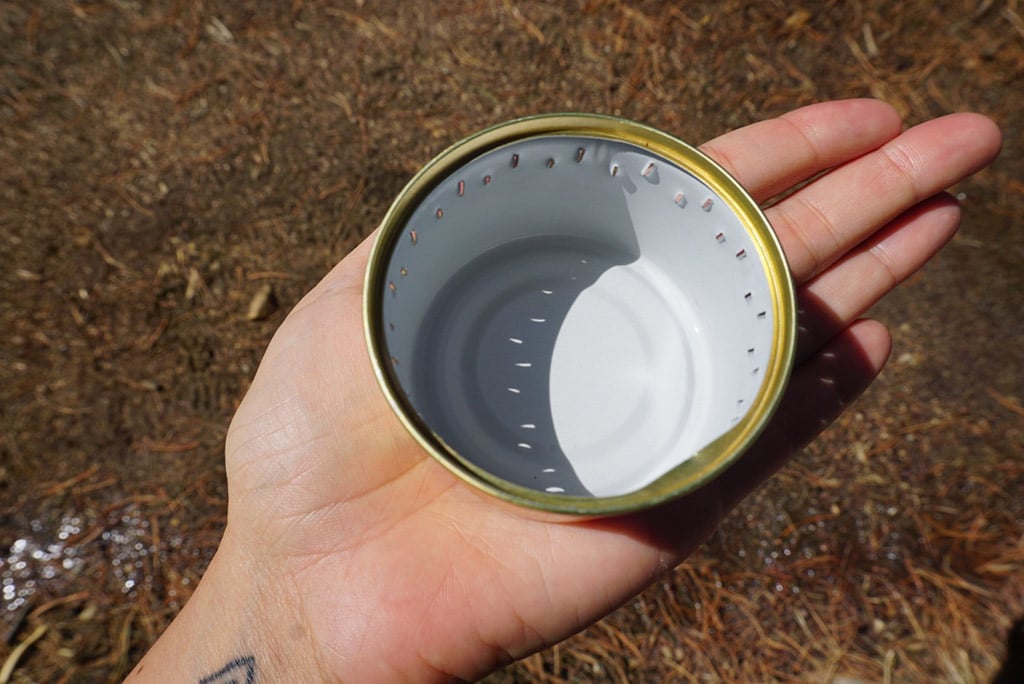
The DIY cat stove was an extremely affordable stove option. The PocketRocket Deluxe was still a relatively affordable stove option, but has a few features that add to its appeal: it comes with an ignition switch, has a much higher level of adjustability than a cat stove and it functions well at high elevations.
Here are some additional considerations backpackers should weigh prior to choosing their cook system:
1. Stove Safety Hazards
Wildfires are a growing issue across the United States. Since the year 2000, an average of 70,000 wildfires have burned more than 7 million acres each year. To reduce human-caused fires, some states have enacted strict fire regulations that prohibit dumping ash and having fires outside of designated pits. Some states even have backpacking stove-specific regulations during fire season. For example, western states like California and Colorado often require a stove with an on/off switch to boost safety and reduce accidental fires.
Cat stoves, while reliable and extremely accessible, will never have a reliable on/off switch. You could take extra precautions while using this style of stove, like placing it inside of an established fire ring prior to use but, generally speaking, this style of stove can present more hazard than one without an on/off knob.
Alternately, the PocketRocket Deluxe comes with a Piezo igniter and a twist knob that allows you to control the flame and quickly cut off the gas supply if necessary. For these reasons, this type of a stove is a better option for backpacking where fire danger is a concern.
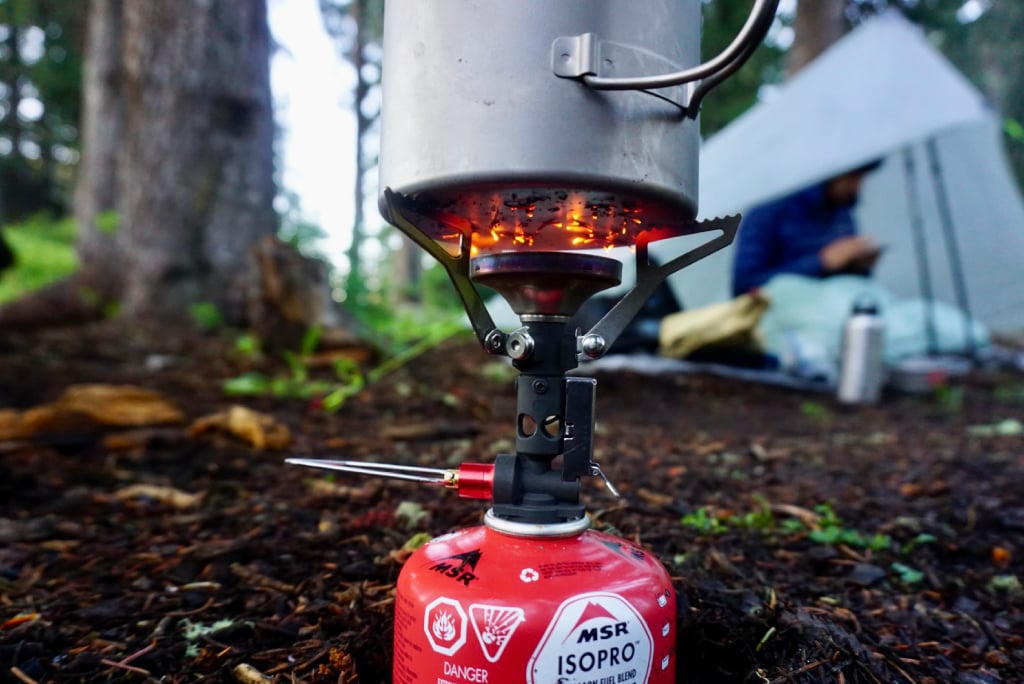
2. Backpacking Stove Performance
A backpacking stove’s performance is another key component to cooking safely in the backcountry. Over the course of 4 months, I found that the cat stove performed fairly well at low to moderate elevations. However, the higher I climbed, the longer it took to boil water, meaning I needed to carry more fuel and wait longer to eat at the end of a long day. Whatever stove you use, it’s likely that your gas consumption will go up as you climb higher. In fact, I found that in extremely cold and wet environments, the cat stove was nearly ineffective at about 5,000 ft, while the PocketRocket Deluxe ran strong.
3. Backpacking Stove Weight & Size
Another essential backpacking stove consideration for hopeful thru-hikers is weight and size. Finding ways to lower your pack weight helps to reduce the strain on your joints, which makes for a more comfortable experience overall. Cat stoves typically weigh 2-3 ounces, but denatured alcohol or HEET tend to weigh more than your standard gas canister. Depending on its size, a canister of isoPro™ Fuel is usually a few ounces lighter than the same-sized container full of liquid fuel. In addition, the MSR PocketRocket Deluxe weighs just 2.6 ounces, making it very competitive with a cat stove alternative.
Weighing 15 ounces including the pot, a stove system like the WindBurner™ is substantially heavier than both of these options, but it’s still a worthy pick in specific environments. Working as a system, the pot and stove are integrated, making a great choice above treeline where wind can cripple a stove’s efficiency. While you’re navigating this topic, think about your target base weight and how big you want your pack to be. In many cases, opting for an ultralight system, despite its weight, will offer a body-friendly solution while adding a lot of convenience and reliability.
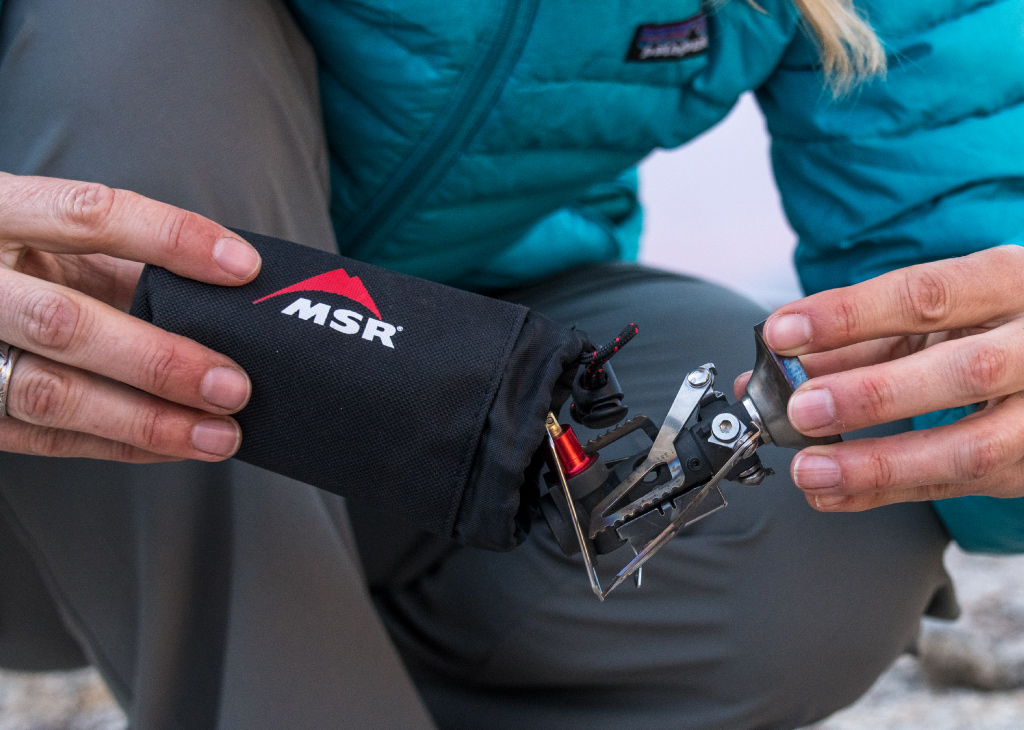
Best Stoves for Thru-Hiking (IMHO)
If you ever hear definitive thru-hiking advice, it’s probably wrong. No single backpacking stove, tent or sleep system is perfect for everyone. Personal preferences play a huge role in designing the right backpacking setup. If you are new to the outdoors, it can be really intimidating to determine which stove you should bring – especially when you’re working with limited resources.
Over the course of time, I’ve found that I prefer one bulletproof stove option that fits a variety of environments, over 3 or 4 options, each with a specific strength. For this reason, the PocketRocket Deluxe is my go-to stove. It works well in the Rockies, in Appalachia, and even in the desert. It also comes with an ignition switch, and is still a relatively affordable stove compared to other options in its class. This is not to say that I’ll never break out that handy cat stove that I made almost a decade ago on the crusty floor of a motel room, but because backpacking plays a huge part in my lifestyle, I’ve learned to prefer reliability over affordability, which makes the PocketRocket Deluxe a no-brainer.
Related Posts:
- A Guide to MSR Backpacking Stoves
- How Much Backpacking Stove Fuel Should I Carry?
- Budgeting for Your Next Thru-Hike
 About the Author
About the Author
Mary Beth Skylis has been lucky enough to begin her life of outdoor pursuits on long trails, hiking the 2200-mile Appalachian Trail, the 458-mile Colorado Trail and part of the Annapurna Circuit. She has feasted her eyes on the snowy Himalayan peaks, watched aggressive rhinos contemplating a charge, and observed Costa Rican monkeys leaping through the air. Her work can be found in Backpacker Magazine, Outside Magazine, and Yoga Journal.

